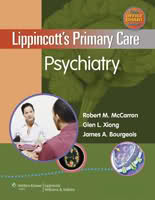Cortical Basal Ganglionic Degeneration
2 posters
Page 1 of 1
 Cortical Basal Ganglionic Degeneration
Cortical Basal Ganglionic Degeneration
Introduction
Background
Cortical basal ganglionic degeneration (CBGD), a sporadic neurodegenerative tauopathy, may be considered a syndrome rather than a disease. Its defining clinical characteristics (ie, progressive dementia, parkinsonism, limb apraxia) may occur as a result of heterogenous neuropathological conditions such as Pick complex disorders (see Pick Disease), Alzheimer disease, and even rare disorders such as CNS Whipple disease and Niemann-Pick type C. Histopathologically identifiable CBGD can also present clinically as primary progressive aphasia26 or primary progressive apraxia in patients who had no prominent movement disorders earlier in their lives.
Pathophysiology
Both cortical and subcortical abnormalities are seen. As in Pick disease and progressive supranuclear palsy, tau-immunoreactive neuronal and glial inclusions may be seen in cortical (pyramidal and nonpyramidal) neurons as well as subcortical regions. However, inclusions in CBGD, unlike Pick bodies, are not immunoreactive to ubiquitin.9 Ballooned swollen neurons with loss of cytoplasmic staining (ie, achromasia) are a supportive feature when present in the cortex and the basal ganglia. CBGD may be associated with both cortical and subcortical neuronal loss; cortical loss may distinguish this disorder from progressive supranuclear palsy.32
Frequency
United States
Data on incidence and prevalence of this disorder are still being collected. Clinical reports have multiplied geometrically in the last 20 years, suggesting either that clinical evaluation has become more sensitive or that the syndrome is appearing more frequently. It is estimated to account for about 5% of cases of parkinsonism seen in clinics that specialize in movement disorders, or 0.62-0.92 per 100,000 per year, with an estimated prevalence of 4.9-7.3 per 100,000.
Mortality/Morbidity
This is a progressive neurodegenerative disorder with increasing levels of disability and loss of independence. Individuals with CBGD do not usually die of the disorder itself but of complications of the bedridden state, such as aspiration pneumonia and infections, within 10 years of onset.
Race
No racial predilection is known.
Sex
CBDG may be more common in women.
Age
Typically, CBGD presents between the ages of 60 and 80. No pathologically confirmed case of CBGD has ever been published with onset before 45 years, but the author of this chapter personally reviewed medical records for a man who died with pathologically confirmed CBGD whose first symptoms occurred at age 41.
Clinical
History
Boeve et al proposed the following clinical diagnostic criteria for cortical basal ganglionic degeneration (CBGD):3
* Insidious onset and progressive course
* No identifiable alternative cause (stroke, tumor, etc)
* Cortical dysfunction including at least 1 of the following:
o Focal or asymmetric ideomotor apraxia37 : Disorder of skilled, learned, purposeful movement; this is one of the few disorders in which limb apraxia can appear in the history (ie, patients are often aware of the apraxia).
o Alien limb ("My hand/leg has a mind of its own.")
* Cortical (parietal) sensory loss
* Visual or tactile neglect
* Constructional apraxia
* Focal or asymmetric myoclonus
* Apraxia of speech or nonfluent aphasia35
* Extrapyramidal dysfunction, including at least 1 of the following:
o Focal or asymmetric appendicular rigidity (unresponsive to levodopa)37
o Focal or asymmetric appendicular dystonia
* In some cases, associated depression and postural instability
* Unusual presentations, for example, primary progressive aphasia and progressive buccofacial apraxia
* Prominent delusions or hallucinations (not related to levodopa): These suggest that the patient does not have CBGD; they are more characteristic of diffuse Lewy body disease.
Physical
* Limb apraxia: Patients must make errors beyond using a body part as a tool (eg, using fingers as scissor blades). Errors often suggest ideomotor or limb-kinetic apraxia.
* Other mental abnormalities include the following:
o Amnesia
o Generally, no "cognitive" abnormalities (eg, right-left disorientation, naming difficulty, acalculia), but rather "frontal-executive" deficits (eg, distractibility, perseveration, loss of judgment, motor planning deficit even on the less motor-impaired side)
* Eye movements: These can be impaired, with restricted horizontal movements as well as upgaze; restricted downgaze is suggestive of progressive supranuclear palsy.
* Dystonia: This is not purely action induced.
* Myoclonus: Myoclonus must spread beyond fingers if stimulus sensitive.
* Rigidity: This must be elicited easily without reinforcement.
* No resting tremor is present.
* No autonomic disturbance is present.
* Cortical sensory loss: Loss of graphesthesia (ability to identify a letter drawn in the hand or on the finger) can be a sensitive test.
Causes
* The cause of CBGD is unknown.
* Case reports suggest that a familial predisposition may exist in some individuals with this disorder.
* Because of the clinical and pathologic relationships between CBGD, progressive supranuclear palsy, and Pick disease, interest in this disease has focused on chromosome arm 17q markers. At this point, however, no definite relationship between genetic markers in this region and CBGD has been demonstrated.
* Limb apraxia and eye movement abnormalities appear to be highly associated with left cortical structural change.
business opportunity
Travel MAC Brushes Set
Background
Cortical basal ganglionic degeneration (CBGD), a sporadic neurodegenerative tauopathy, may be considered a syndrome rather than a disease. Its defining clinical characteristics (ie, progressive dementia, parkinsonism, limb apraxia) may occur as a result of heterogenous neuropathological conditions such as Pick complex disorders (see Pick Disease), Alzheimer disease, and even rare disorders such as CNS Whipple disease and Niemann-Pick type C. Histopathologically identifiable CBGD can also present clinically as primary progressive aphasia26 or primary progressive apraxia in patients who had no prominent movement disorders earlier in their lives.
Pathophysiology
Both cortical and subcortical abnormalities are seen. As in Pick disease and progressive supranuclear palsy, tau-immunoreactive neuronal and glial inclusions may be seen in cortical (pyramidal and nonpyramidal) neurons as well as subcortical regions. However, inclusions in CBGD, unlike Pick bodies, are not immunoreactive to ubiquitin.9 Ballooned swollen neurons with loss of cytoplasmic staining (ie, achromasia) are a supportive feature when present in the cortex and the basal ganglia. CBGD may be associated with both cortical and subcortical neuronal loss; cortical loss may distinguish this disorder from progressive supranuclear palsy.32
Frequency
United States
Data on incidence and prevalence of this disorder are still being collected. Clinical reports have multiplied geometrically in the last 20 years, suggesting either that clinical evaluation has become more sensitive or that the syndrome is appearing more frequently. It is estimated to account for about 5% of cases of parkinsonism seen in clinics that specialize in movement disorders, or 0.62-0.92 per 100,000 per year, with an estimated prevalence of 4.9-7.3 per 100,000.
Mortality/Morbidity
This is a progressive neurodegenerative disorder with increasing levels of disability and loss of independence. Individuals with CBGD do not usually die of the disorder itself but of complications of the bedridden state, such as aspiration pneumonia and infections, within 10 years of onset.
Race
No racial predilection is known.
Sex
CBDG may be more common in women.
Age
Typically, CBGD presents between the ages of 60 and 80. No pathologically confirmed case of CBGD has ever been published with onset before 45 years, but the author of this chapter personally reviewed medical records for a man who died with pathologically confirmed CBGD whose first symptoms occurred at age 41.
Clinical
History
Boeve et al proposed the following clinical diagnostic criteria for cortical basal ganglionic degeneration (CBGD):3
* Insidious onset and progressive course
* No identifiable alternative cause (stroke, tumor, etc)
* Cortical dysfunction including at least 1 of the following:
o Focal or asymmetric ideomotor apraxia37 : Disorder of skilled, learned, purposeful movement; this is one of the few disorders in which limb apraxia can appear in the history (ie, patients are often aware of the apraxia).
o Alien limb ("My hand/leg has a mind of its own.")
* Cortical (parietal) sensory loss
* Visual or tactile neglect
* Constructional apraxia
* Focal or asymmetric myoclonus
* Apraxia of speech or nonfluent aphasia35
* Extrapyramidal dysfunction, including at least 1 of the following:
o Focal or asymmetric appendicular rigidity (unresponsive to levodopa)37
o Focal or asymmetric appendicular dystonia
* In some cases, associated depression and postural instability
* Unusual presentations, for example, primary progressive aphasia and progressive buccofacial apraxia
* Prominent delusions or hallucinations (not related to levodopa): These suggest that the patient does not have CBGD; they are more characteristic of diffuse Lewy body disease.
Physical
* Limb apraxia: Patients must make errors beyond using a body part as a tool (eg, using fingers as scissor blades). Errors often suggest ideomotor or limb-kinetic apraxia.
* Other mental abnormalities include the following:
o Amnesia
o Generally, no "cognitive" abnormalities (eg, right-left disorientation, naming difficulty, acalculia), but rather "frontal-executive" deficits (eg, distractibility, perseveration, loss of judgment, motor planning deficit even on the less motor-impaired side)
* Eye movements: These can be impaired, with restricted horizontal movements as well as upgaze; restricted downgaze is suggestive of progressive supranuclear palsy.
* Dystonia: This is not purely action induced.
* Myoclonus: Myoclonus must spread beyond fingers if stimulus sensitive.
* Rigidity: This must be elicited easily without reinforcement.
* No resting tremor is present.
* No autonomic disturbance is present.
* Cortical sensory loss: Loss of graphesthesia (ability to identify a letter drawn in the hand or on the finger) can be a sensitive test.
Causes
* The cause of CBGD is unknown.
* Case reports suggest that a familial predisposition may exist in some individuals with this disorder.
* Because of the clinical and pathologic relationships between CBGD, progressive supranuclear palsy, and Pick disease, interest in this disease has focused on chromosome arm 17q markers. At this point, however, no definite relationship between genetic markers in this region and CBGD has been demonstrated.
* Limb apraxia and eye movement abnormalities appear to be highly associated with left cortical structural change.
business opportunity
Travel MAC Brushes Set

sangbmt- New Member

-



Number of posts : 4
Age : 33
Nerden : sa
İş/Hobiler : sd
Reputation : 1
Points : 4896
Registration date : 2011-01-04
 Re: Cortical Basal Ganglionic Degeneration
Re: Cortical Basal Ganglionic Degeneration
thanks so much!

CK1NTK- New Member

-



Number of posts : 5
Age : 46
Nerden : sawwwq
İş/Hobiler : assss
Reputation : 1
Points : 4036
Registration date : 2013-05-06
Page 1 of 1
Permissions in this forum:
You cannot reply to topics in this forum|
|
|














